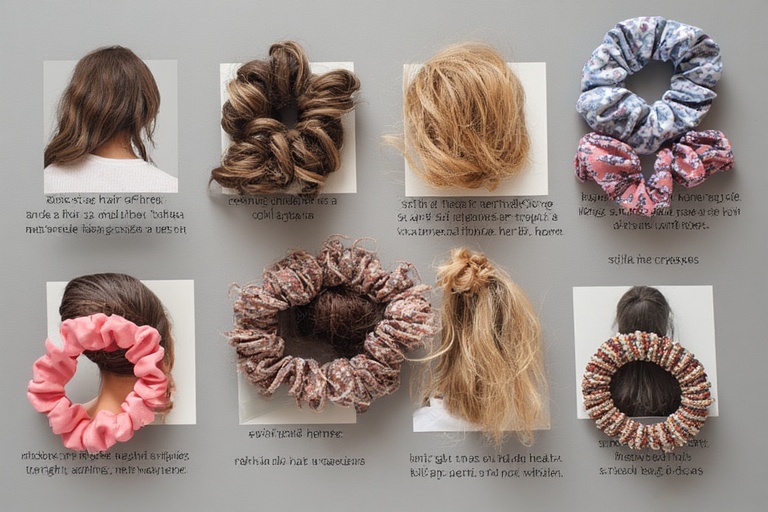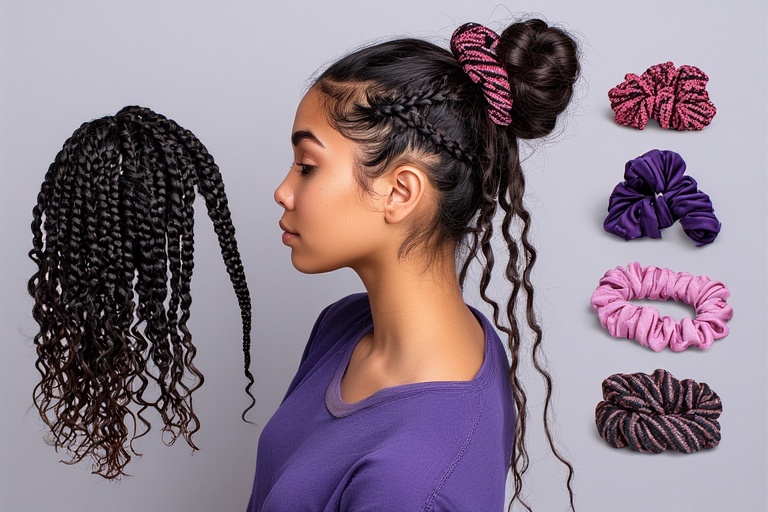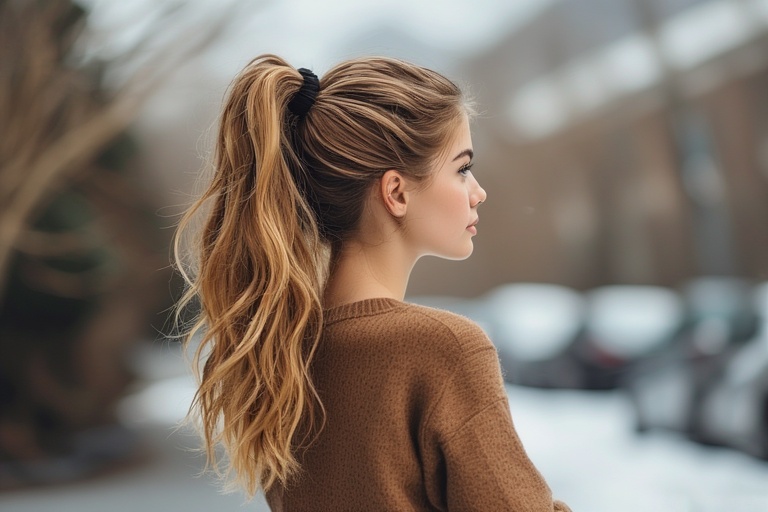Whether you’re rushing to the gym, styling for a night out, or just keeping your locks out of your face, a hair tie is a go-to accessory for millions. But have you ever wondered about its origins or how to pick one that won’t damage your strands? This comprehensive guide dives into the world of ponytail holders, from their fascinating history to tips on choosing the best elastic hair bands for your hair type. We’ll help you avoid common pitfalls and unlock stylish looks, all while prioritizing hair health. By the end, you’ll master using hair ties like a pro—keeping your mane strong, shiny, and snag-free.
The History of Hair Ties: From Ancient Times to Modern Must-Haves
Hair ties aren’t a new invention; they’ve evolved over centuries to meet our styling needs. Early humans used natural materials like plant fibers, animal hides, or even woven hair to secure their tresses. By the 1650s, women and children tied colorful fabric ribbons into bows for a decorative touch.
The game-changer came in the 1800s with the invention of elastic rubber, initially used for shoes and stockings. It wasn’t until the 20th century that elastic made its way into hair accessories, replacing stiff leather bands. The iconic scrunchie burst onto the scene in the 1980s, popularized by celebrities and offering a gentler alternative. Today, innovations like spiral designs continue to push boundaries for comfort and style.
Suggested visual: An infographic timeline showing hair tie evolution from ribbons to spirals.
Types of Hair Ties: Finding the Perfect Match for Your Hair
Not all hair ties are created equal—different designs suit various hair textures, lengths, and activities. Here’s a breakdown of popular options:
- Elastic Hair Ties: The classic choice, made from rubber or nylon. They’re affordable and strong but can cause creases if too tight.
- Scrunchies: Fabric-covered elastics that add volume and reduce damage. Ideal for thick or curly hair, with silk versions being ultra-gentle.
- Spiral or Coil Hair Ties: Phone cord-like designs that distribute pressure evenly. Great for fine hair, workouts, or avoiding headaches.
- Ribbon or Scarf Ties: Soft, decorative options for a boho vibe. They minimize pulling but may not hold as securely for active days.
- Headbands and Clips as Alternatives: For those skipping ties altogether, fabric or toothed headbands keep hair back without tension.
According to hairstylists, scrunchies often win for overall hair health due to their soft materials. For workouts, opt for waterproof coils that won’t absorb sweat.

A colorful assortment of different hair tie types, including coils, scrunchies, and elastics.
Suggested visual: A comparison chart of hair tie types with pros, cons, and best hair matches.
Best Hair Ties for Hair Health: Protecting Your Strands
Choosing the right hair tie can prevent breakage, tangles, and even headaches. Experts recommend natural materials like silk, satin, or cotton, which glide smoothly without snagging. Avoid cheap rubber bands with metal joins—they’re notorious for ripping hairs.
For curly or thick hair, jumbo scrunchies or spirals hold without slipping, while thin hair benefits from mini elastics that don’t overwhelm. A study by hair care brands shows that switching to silk reduces breakage by up to 50% compared to traditional elastics. Brands like Invisibobble and Slip are top picks for no-damage options.
Actionable tip: Test a tie by stretching it—if it snaps back quickly without creases, it’s a keeper.
How to Use Hair Ties Properly: Step-by-Step Tips
Using a ponytail holder seems simple, but technique matters for healthy hair. Start with dry hair to avoid fragility. Here’s how:
- Place the tie on your dominant wrist.
- Gather hair with both hands into your desired style.
- Slide the tie off your wrist and wrap it 2-3 times—don’t over-twist.
- Gently remove by unwinding, not pulling.
For men with long hair, use wider bands for better grip. Always vary ponytail height to prevent tension in one spot.
Suggested visual: A short video tutorial on tying a perfect ponytail.
Common Mistakes with Hair Ties and How to Avoid Them
Many of us make errors that lead to damaged hair without realizing it. Top pitfalls include:
- Tying wet hair: It stretches strands, causing breakage.
- Using worn-out ties: Overstretched elastics slip and pull more.
- Metal-clasp bands: They snag and tear hairs—switch to seamless.
- Too-tight styles: This can cause traction alopecia over time.
Fix it by storing ties away from sunlight and replacing them every few months. As one stylist notes, “Gentle is always better for long-term hair health.”
Creative Hair Tie Styling Ideas: Beyond the Basic Ponytail
Elevate your look with versatile hair tie techniques. Try box braids secured with mini ties for a protective style, or a messy bun with a scrunchie for effortless chic.
For workouts, a high ponytail with a coil keeps things secure. Add flair with ribbon ties in half-up styles or double buns for fun volume.

Inspiring scrunchie hairstyles, from braids to buns.
Suggested visual: Step-by-step infographics for 5 easy updos.
Wrapping It Up: Tie Your Hair with Confidence
From humble ribbons to high-tech spirals, hair ties have come a long way in supporting our daily styles while protecting our hair. Remember to choose gentle materials, use proper techniques, and mix up your looks to keep things fresh. Ready to upgrade your routine? Grab a silk scrunchie or coil tie today and see the difference in your hair’s health. For more tips, check out hair care resources from Allure or expert advice on Wikipedia.

Leave a Reply